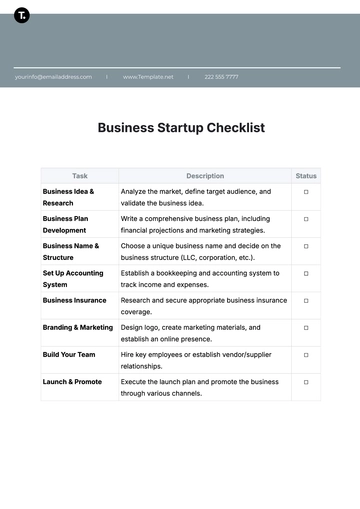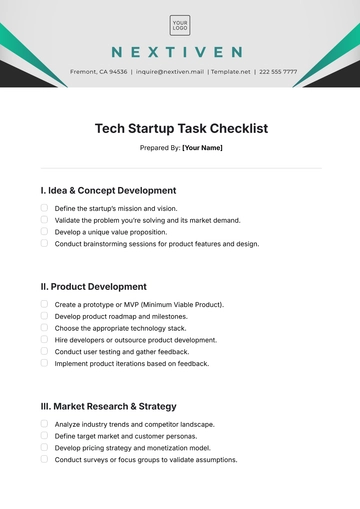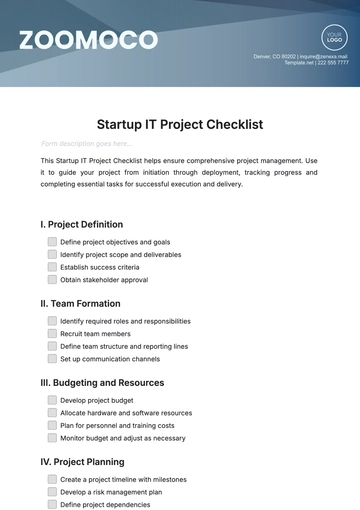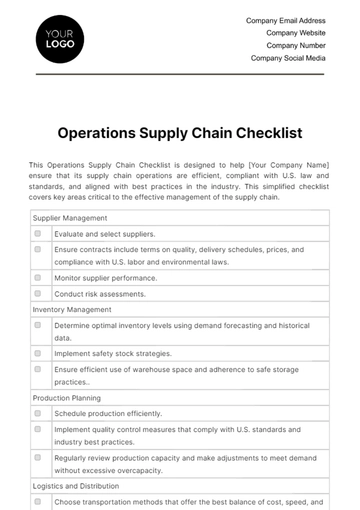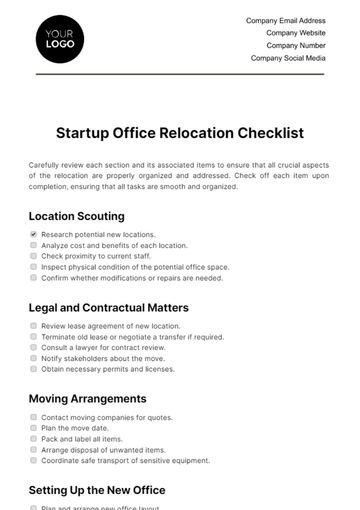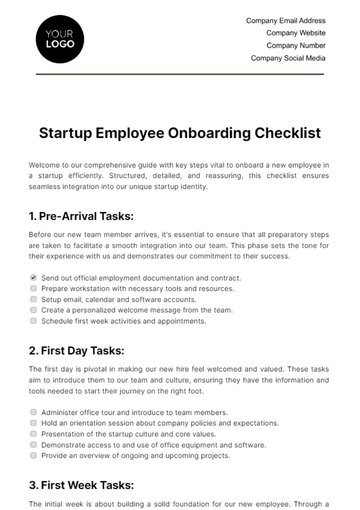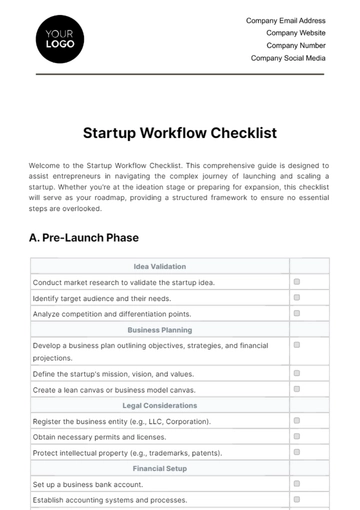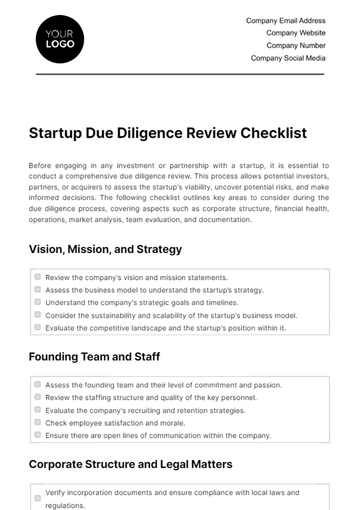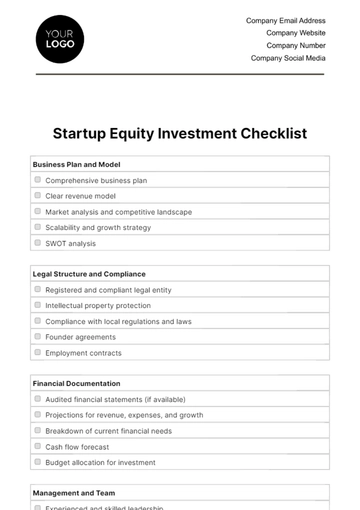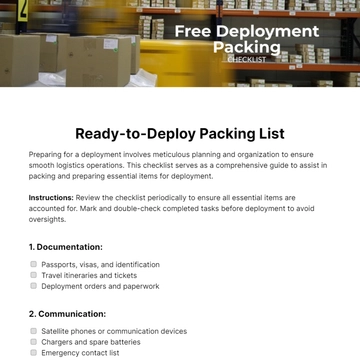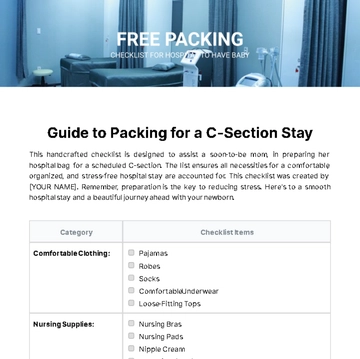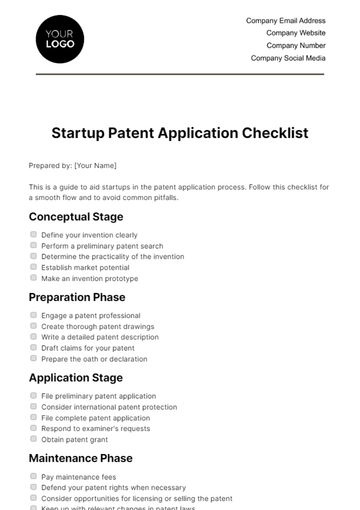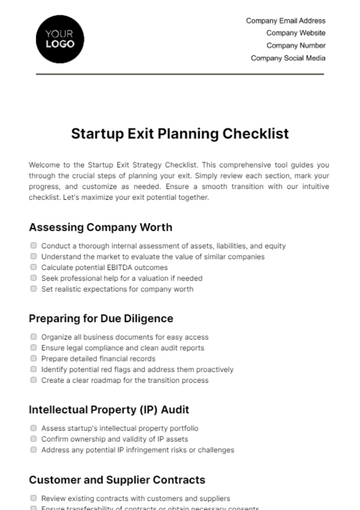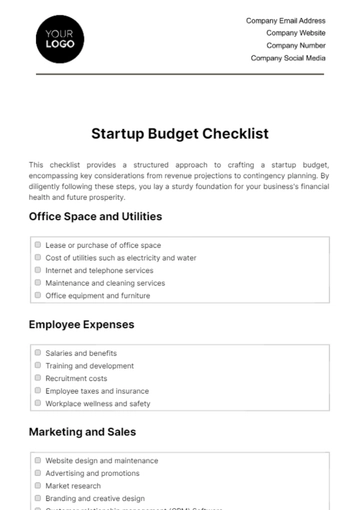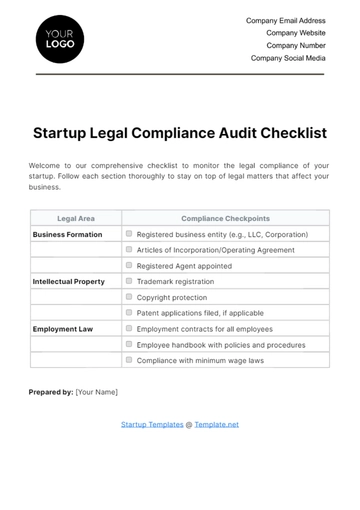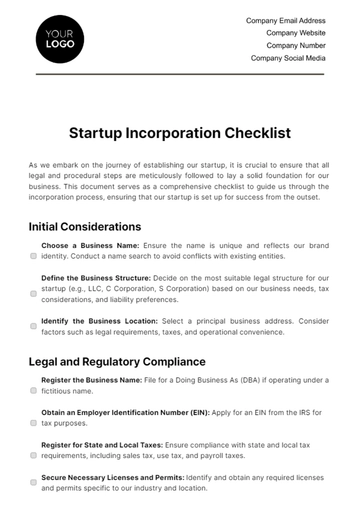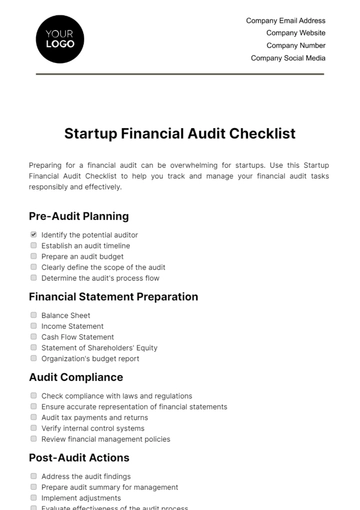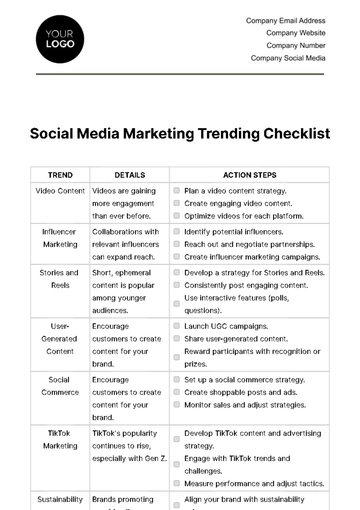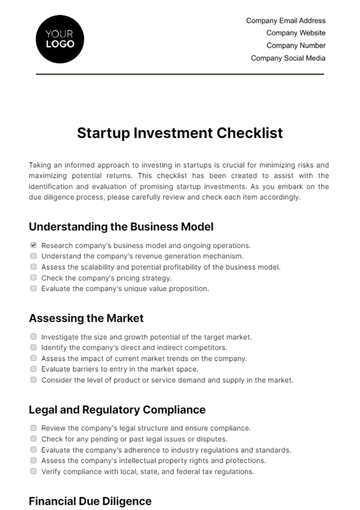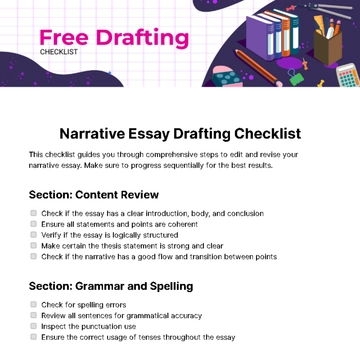Free Marketing Pricing Strategy Checklist
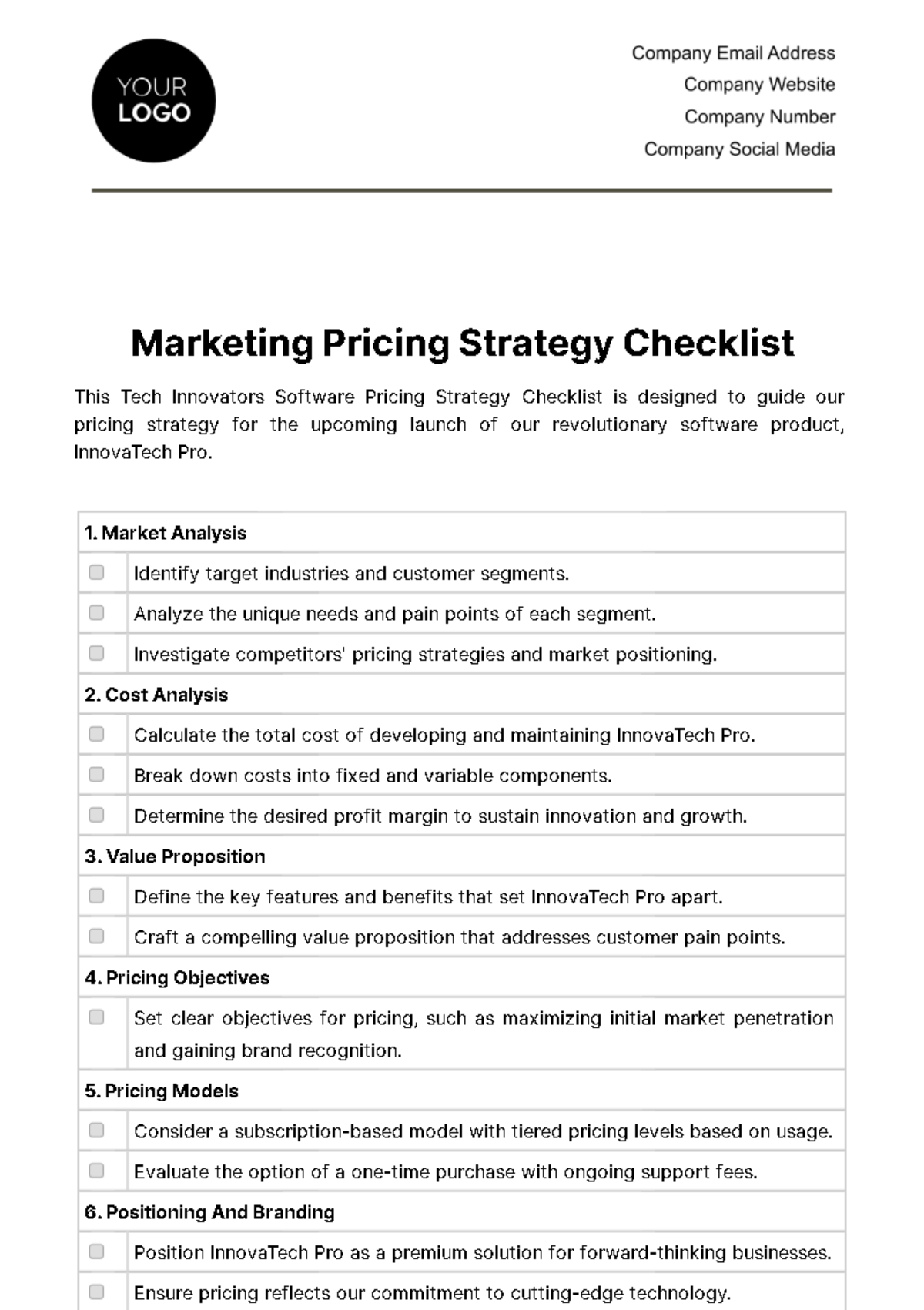
This Tech Innovators Software Pricing Strategy Checklist is designed to guide our pricing strategy for the upcoming launch of our revolutionary software product, InnovaTech Pro.
1. Market Analysis | |
Identify target industries and customer segments. | |
Analyze the unique needs and pain points of each segment. | |
Investigate competitors' pricing strategies and market positioning. | |
2. Cost Analysis | |
Calculate the total cost of developing and maintaining InnovaTech Pro. | |
Break down costs into fixed and variable components. | |
Determine the desired profit margin to sustain innovation and growth. | |
3. Value Proposition | |
Define the key features and benefits that set InnovaTech Pro apart. | |
Craft a compelling value proposition that addresses customer pain points. | |
4. Pricing Objectives | |
Set clear objectives for pricing, such as maximizing initial market penetration and gaining brand recognition. | |
5. Pricing Models | |
Consider a subscription-based model with tiered pricing levels based on usage. | |
Evaluate the option of a one-time purchase with ongoing support fees. | |
6. Positioning And Branding | |
Position InnovaTech Pro as a premium solution for forward-thinking businesses. | |
Ensure pricing reflects our commitment to cutting-edge technology. | |
7. Discounts And Promotions | |
Plan limited-time introductory discounts to incentivize early adopters. | |
Explore the potential for bundle discounts when purchasing multiple licenses. | |
8. Psychological Pricing | |
Utilize pricing psychology by setting price points like $99.99 or $499 instead of round numbers. | |
9. Channel Pricing | |
Define pricing structures for different distribution channels, including direct sales, online platforms, and partner networks. | |
10. Geographic Pricing | |
Consider international pricing variations based on local market conditions and currency exchange rates. | |
11. Dynamic Pricing | |
Explore the feasibility of dynamic pricing based on real-time data and demand fluctuations. | |
12. Competitive Analysis | |
Regularly monitor competitors' pricing strategies and adapt accordingly to maintain our competitive edge. | |
13. Customer Feedback | |
Collect customer feedback through surveys and user forums to assess their perception of our pricing. | |
14. Profitability Analysis | |
Continuously evaluate how pricing strategies impact our overall profitability. | |
15. Legal And Regulatory Compliance | |
Ensure that our pricing practices adhere to all relevant laws and regulations in the tech industry. | |
16. Testing And Optimization | |
Conduct A/B testing with different pricing structures to identify the most effective strategy. | |
17. Review And Adjust | |
Schedule regular reviews of our pricing strategy to adapt to market changes and customer feedback. | |
18. Communication Plan | |
Develop a communication plan for transparently informing customers about pricing changes and new offers. | |
- 100% Customizable, free editor
- Access 1 Million+ Templates, photo’s & graphics
- Download or share as a template
- Click and replace photos, graphics, text, backgrounds
- Resize, crop, AI write & more
- Access advanced editor
Streamline your pricing strategy with Template.net's Marketing Pricing Strategy Checklist Template. This editable and customizable tool is designed to ensure thoroughness and accuracy in your pricing decisions. Effortlessly refine and tailor your checklist using our Ai Editor Tool, empowering you to optimize pricing for maximum profitability and market competitiveness.
You may also like
- Cleaning Checklist
- Daily Checklist
- Travel Checklist
- Self Care Checklist
- Risk Assessment Checklist
- Onboarding Checklist
- Quality Checklist
- Compliance Checklist
- Audit Checklist
- Registry Checklist
- HR Checklist
- Restaurant Checklist
- Checklist Layout
- Creative Checklist
- Sales Checklist
- Construction Checklist
- Task Checklist
- Professional Checklist
- Hotel Checklist
- Employee Checklist
- Moving Checklist
- Marketing Checklist
- Accounting Checklist
- Camping Checklist
- Packing Checklist
- Real Estate Checklist
- Cleaning Checklist Service
- New Employee Checklist
- Food Checklist
- Home Inspection Checklist
- Advertising Checklist
- Event Checklist
- SEO Checklist
- Assessment Checklist
- Inspection Checklist
- Baby Registry Checklist
- Induction Checklist
- Employee Training Checklist
- Medical Checklist
- Safety Checklist
- Site Checklist
- Job Checklist
- Service Checklist
- Nanny Checklist
- Building Checklist
- Work Checklist
- Office Checklist
- Training Checklist
- Website Checklist
- IT and Software Checklist
- Performance Checklist
- Project Checklist
- Startup Checklist
- Education Checklist
- Home Checklist
- School Checklist
- Maintenance Checklist
- Planning Checklist
- Manager Checklist
- Wedding Checklist
- Vehicle Checklist
- Travel Agency Checklist
- Vehicle Inspection Checklist
- Interior Design Checklist
- Backpacking Checklist
- Business Checklist
- Legal Checklist
- Nursing Home Checklist
- Weekly Checklist
- Recruitment Checklist
- Salon Checklist
- Baby Checklist
- Equipment Checklist
- Trade Show Checklist
- Party Checklist
- Hospital Bag Checklist
- Evaluation Checklist
- Agency Checklist
- First Apartment Checklist
- Hiring Checklist
- Opening Checklist
- Small Business Checklist
- Rental Checklist
- College Dorm Checklist
- New Puppy Checklist
- University Checklist
- Building Maintenance Checklist
- Work From Home Checklist
- Student Checklist
- Application Checklist
